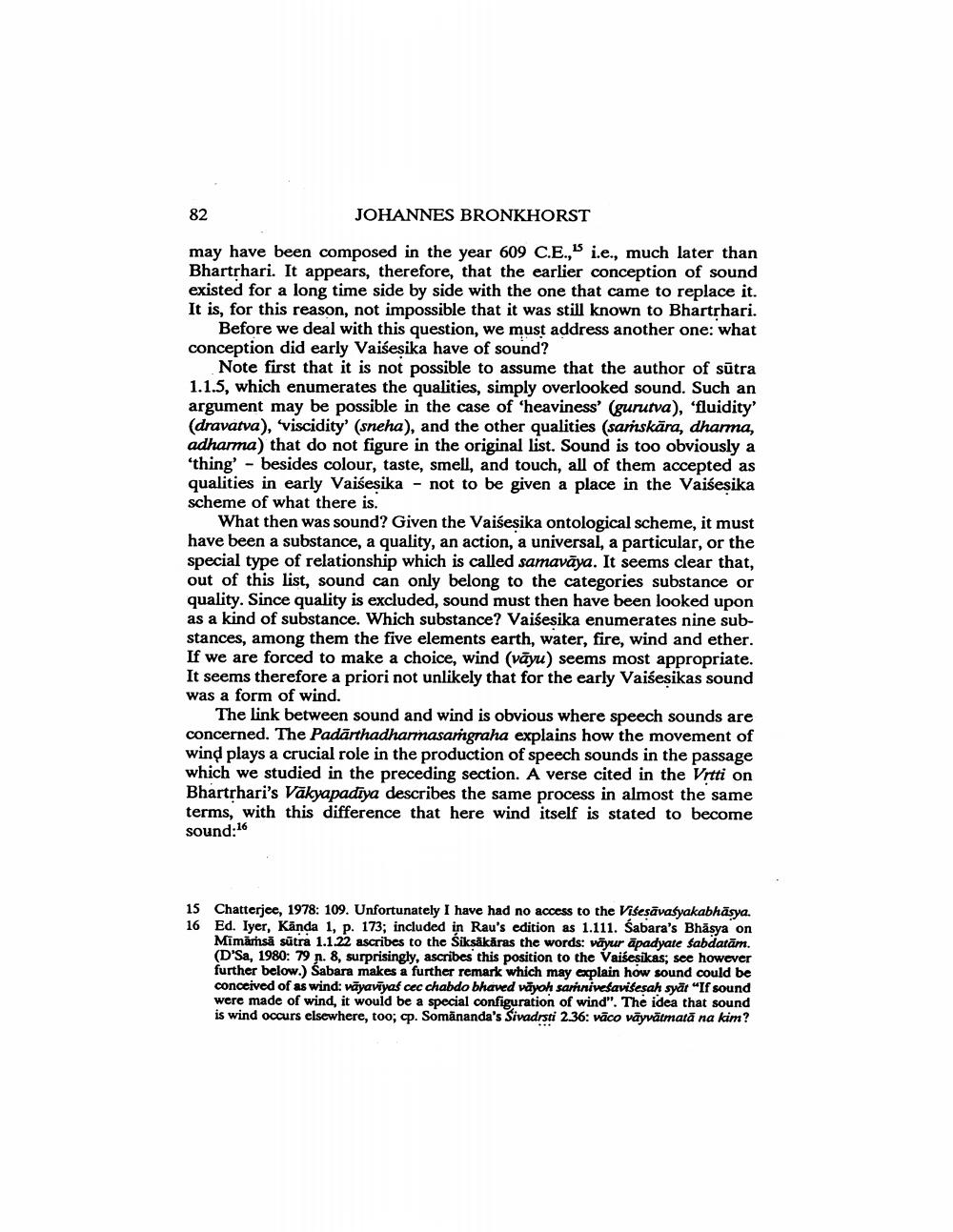________________
JOHANNES BRONKHORST
may have been composed in the year 609 C.E.,'' i.e., much later than Bhartrhari. It appears, therefore, that the earlier conception of sound existed for a long time side by side with the one that came to replace it. It is, for this reason, not impossible that it was still known to Bhartrhari.
Before we deal with this question, we must address another one: what conception did early Vaiśesika have of sound?
Note first that it is not possible to assume that the author of sūtra 1.1.5, which enumerates the qualities, simply overlooked sound. Such an argument may be possible in the case of 'heaviness' (gurutva), 'fluidity' (dravatva), viscidity' (sneha), and the other qualities (sarskāra, dharma, adharma) that do not figure in the original list. Sound is too obviously a "thing - besides colour, taste, smell, and touch, all of them accepted as qualities in early Vaišesika - not to be given a place in the Vaiśesika scheme of what there is.
What then was sound? Given the Vaiśesika ontological scheme, it must have been a substance, a quality, an action, a universal, a particular, or the special type of relationship which is called samavāya. It seems clear that, out of this list, sound can only belong to the categories substance or quality. Since quality is excluded, sound must then have been looked upon as a kind of substance. Which substance? Vaiśesika enumerates nine substances, among them the five elements earth, water, fire, wind and ether. If we are forced to make a choice, wind (vāyu) seems most appropriate. It seems therefore a priori not unlikely that for the early Vaišeşikas sound was a form of wind.
The link between sound and wind is obvious where speech sounds are concerned. The Padārthadharmasagraha explains how the movement of wind plays a crucial role in the production of speech sounds in the passage which we studied in the preceding section. A verse cited in the Vrtti on Bhartrhari's Vākyapadiya describes the same process in almost the same terms, with this difference that here wind itself is stated to become sound:16
15 16
Chatterjee, 1978: 109. Unfortunately I have had no access to the Visesavajyakabhāsya. Ed. Iyer, Kända 1, p. 173; included in Rau's edition as 1.111. Sabara's Bhāsya on Mimarnså sūtra 1.1.22 ascribes to the Siksakāras the words: wäyur ápadyate sabdatām. (D'Sa, 1980: 79 n. 8, surprisingly, ascribes this position to the Vaišesikas, see however further below.) Sabara makes a further remark which may explain how sound could be conceived of as wind: vāyaviyaś cec chabdo bhaved vãyoh sannivesavisesah syar "If sound were made of wind, it would be a special configuration of wind". The idea that sound is wind occurs elsewhere, too; p. Somānanda's Sivadrsti 2.36: vāco väyvātmatā na kim?




